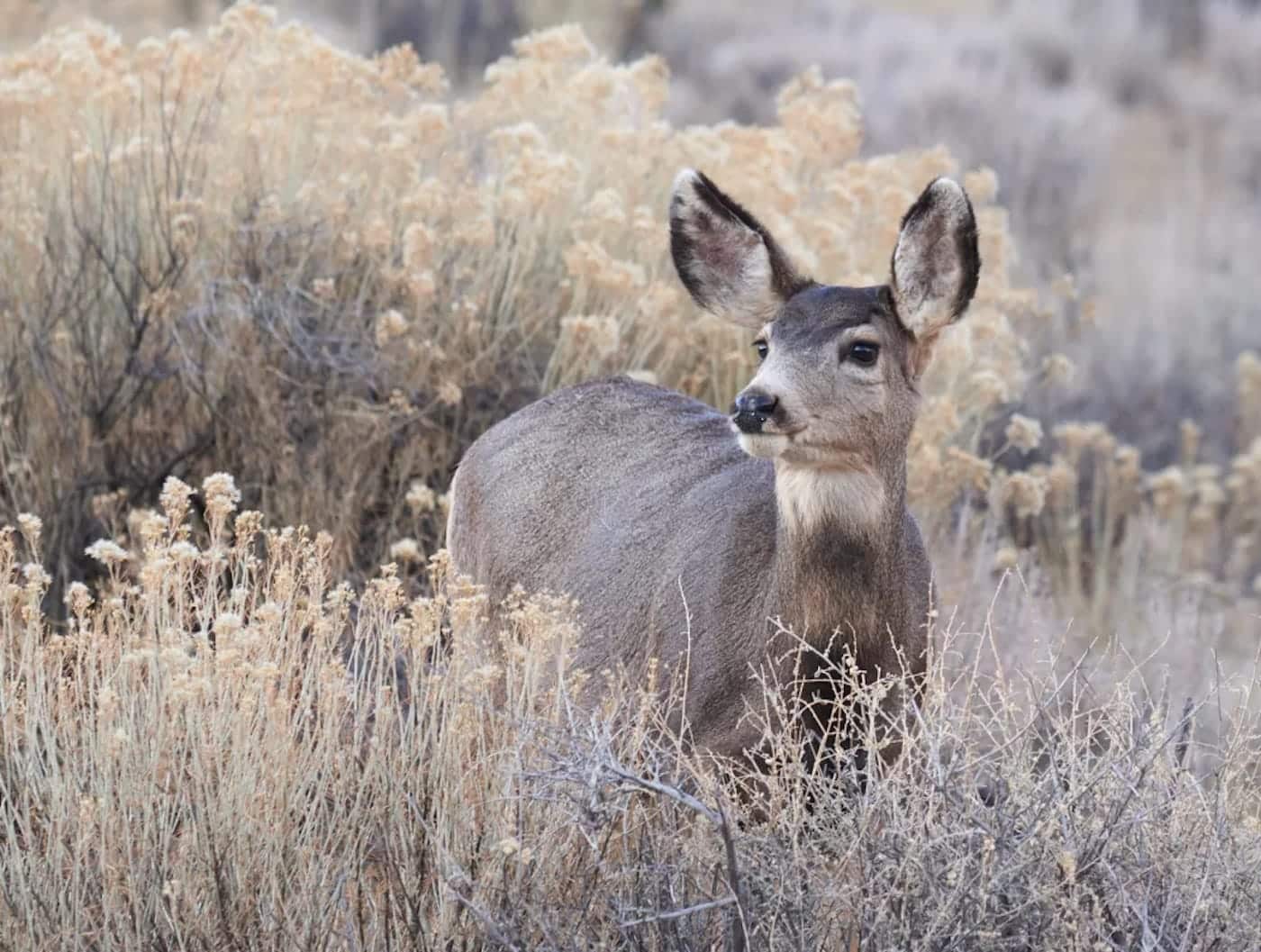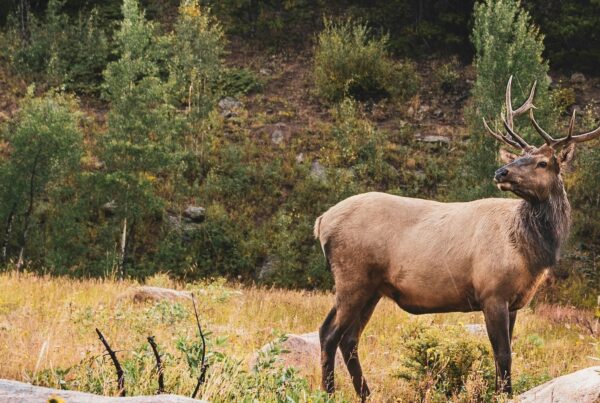FOR IMMEDIATE RELEASE: December 4, 2023
Bureau of Land Management is considering alternatives to minimize and mitigate impacts to wildlife habitat, but more needs to be done to achieve the plan’s stated purpose.
Grand Junction, CO – The Bureau of Land Management (BLM) just released its Draft Big Game Resource Management Plan Amendment (plan) which covers 8.3 million surface acres and 4.7 million acres of mineral estate extending to every Colorado BLM Field Office and to every corner of the state. BLM has the opportunity through this planning process to implement landscape-level protections for big game habitat and consider comprehensive updates to its oil and gas program in Colorado.
This plan will impact all existing BLM land use plans in the state and provide guidance intended to protect wildlife habitat by defining limits on high-density development, including facility and route density limitations, and other lease stipulations that would incorporate conservation measures for important big game habitat, specifically for elk, mule deer, pronghorn, and bighorn sheep. The agency’s preferred approach fails to realize the opportunity of this process, but there is time and space to improve the plan before it’s finalized.
BLM lands are critically important to support wildlife migrations and conserve a range of high priority habitat types across Colorado. By way of example, of the 8.3 million acres of public lands BLM manages in Colorado, 53% provides priority habitat for elk and 48% provides priority habitat for mule deer, according to BLM. Elk, mule deer, pronghorn, and bighorn sheep are heavy users of BLM land and their survival depends on BLM conserving the habitat values those lands have historically provided to these and a host of other wildlife species. Colorado wildlife officials say elk herd numbers may not be sustainable over the next 20 years in certain areas where human development is increasing. Avoiding development impacts whenever possible needs to be a top priority and apply to BLM’s oil and gas decision-making more prominently.
Following a settlement agreement with the State of Colorado, BLM is directed to evaluate oil and gas leasing and management across the state to be more consistent with – and ideally build upon – existing federal and state requirements and objectives including Governor Polis’s Executive Order D-2019-011, the passage of SB-181, and the adoption of the Colorado Energy and Carbon Management Commission’s 1200 series rules.
Existing state standards are a starting point to provide some relief for wildlife. However, avoidance of impacts altogether is the best way to ensure sustainable wildlife populations. BLM’s draft plan presents a reactive approach, relying on mitigation rather than preventing impacts to big game species in the first place, and providing significant opportunity for waivers and exceptions to rules. Additionally, the agency’s preferred alternative would only apply to BLM-owned surface, ignoring impacts on millions of additional acres of mineral estate the BLM manages.
BLM should strengthen their analysis by focusing on avoiding impacts, applying the rules to all the oil and gas resources they manage, and considering additional impacts to wildlife from recreation, renewable energy development, and other sources. This expanded analysis would allow the agency to better understand the full picture of federal land management issues that impact habitat loss and fragmentation.
The draft plan now enters a 90-day public comment period during which anyone with an interest in conserving wildlife habitat and supporting Colorado’s wildlife populations is encouraged to participate.
Community Quotes
“The agency has a tremendous opportunity to make headway against both the climate and biodiversity crises through this planning process,” said Jim Ramey, Colorado State Director for The Wilderness Society. “These lands provide important connective tissue for wildlife to move between protected areas and support Colorado’s well-loved hunting and fishing pastimes. Safeguarding critical habitat is something that most folks agree on. I hope the Bureau of Land Management can strengthen and approve this plan with public feedback ASAP.”
“As stewards of our public lands BLM plays an important role in supporting state wildlife objectives by shaping how our public lands are managed, for what purposes, and in what manner,” said Alison Gallensky, Conservation Geographer, Rocky Mountain Wild. “I would like to see the BLM strengthen their plan by relying less on mitigation of impacts and more on preventing them in the first place.”
“Public lands provide critical habitat for Colorado’s big game herds, and the BLM has a responsibility to ensure it remains connected and functional,” said John Rader, Public Lands Program Manager, San Juans Citizens Alliance. “The agency can make major strides in safeguarding our hunting, fishing, and wildlife watching heritage by stringently protecting the important habitat it manages, including lands that overlay its mineral estate.”
“Wildlife populations across Colorado face a steady and concerning loss and degradation of habitat because of human development,” said Brien Webster, Public Lands Campaign Manager for Conservation Colorado. “Historically, oil and gas has played a significant role in this. Minimizing and mitigating impacts is important, but avoiding these impacts whenever possible is critical. Avoiding these impacts all together is the best shot our elk, mule deer, pronghorn, and bighorn populations have to exist at sustainable levels into the future and I hope to see the BLM strengthen the plan to this end.”
“Our public lands across the Western Slope are dependent on the health of our big game species,” said Hannah Stevens, Executive Director, Western Slope Conservation Center. “Hundreds of thousands of people travel from across the country to hunt and view wildlife on our local public lands, while also spending time in our local communities. As our local economies continue to transition away from a reliance on fossil fuel development, the BLM has a significant opportunity to double-down on this economic shift by strengthening protections for our public lands and these important species.”
“The Draft Big Game Resource Management Plan Amendment is a big deal for Colorado’s wildlife,” said Matt Skroch, project director for the U.S. conservation project, The Pew Charitable Trusts. “When made final, the Bureau of Land Management will have a new blueprint for conserving the habitat of the hundreds of thousands of elk, deer, and pronghorn that live and migrate across the state. This management amendment not only will benefit Colorado’s wildlife heritage and the robust recreation economy that depends on it, but it also will serve as a template for other states to draw from for similar efforts.”
Contacts
- Jim Ramey, Colorado State Director, The Wilderness Society (440-376-6975; jim_ramey@tws.org),
- Brien Webster, Public Lands Campaign Manager, Conservation Colorado (719-322-7050; brien@conservationco.org)
- John Rader, San Juan Citizens Alliance (970-259-3583, john@sanjuancitizens.org)
Photo: Jim Mullen




